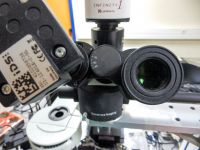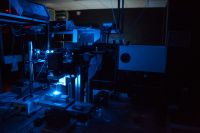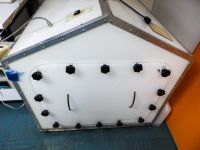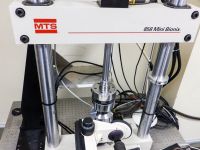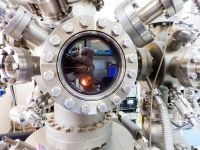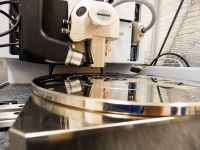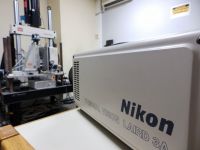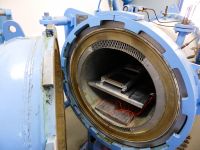Renishaw Raman
inVia - the ultimate research-grade confocal Raman microscope.
It is simple to operate yet delivers outstanding performance and reliable results, for even the most challenging experiments. You can produce both rich, detailed, chemical images and highly specific data from discrete points. With unparalleled flexibility, scientists and engineers, worldwide, trust inVia.
Laser Raman Microscopes (LRM) System 1
"System 1" consists of a 0.65m Spex 1877 Triple Micro-Raman Spectrometer equipped with a 1800gr/mm grating and a Wright Instruments Peltier-cooled CCD detector, a 5W (all lines) Argon Ion laser and a Jobin-Yvon miscoscope with polarizer/analyzer and Dilor confocal hole. A Melles-Griot XYZ microtranslator is employed for accurate Raman mapping with a 1 micrometer resolution. Three exciting wavelength are available: 488 nm, 514.5 nm, 632 nm.
Accelerated Environmental Aging Chamber
Our Enviromental Aging Chamber is a 1x1x1 m3 PMMA construction able to simulate a wide combination of enviromental UV/RH/T conditions. The chamber walls are protected with a 2-component epoxy lacquer coating. The UV source is protectively positioned behind a quartz window on the outter top part of the chamber in a vertical direction to the specimens (simulating direct sunlight exposure).
Servo Hydraulic Testing Frame
Our MTS® 858 Tabletop is a high quality dynamic workstation that provides flexibility when performing dynamic and static testing from 5kN to 25kN load range. The testing frame and ReRaM S3 rest on a vibration-free table and can be configured with a variety of force ratings and controllers. Applications of the MTS® 858 system includes:
AIXTRON BlackMagic
CVD synthesis of graphene
Chemical vapor deposition (CVD) is a technique used to produce thin films of materials. In CVD process, a substrate is heated to high temperature and exposed to precursor gases, which react or decompose on the substrate surface to form a coating of the required material. More specifically, CVD synthesis of materials consists of three steps: Firstly, an appropriate substrate is heated to the growth temperature, while certain gases are flowing to remove any impurities on substrate surface. Then precursor gases are introduced into the reaction chamber and by suitable conditions of pressure, temperature, etc., a coating of the desired material is formed on substrate. Growth continues until precursor gases flow is terminated and finally, on the last step, chamber is cooled down to room temperature.
Ultra High Vacuum System
Surface characterization techniques: XPS/ UPS/ EELS
X-ray photoelectron spectroscopy (XPS) is a surface analysis technique capable of providing elemental and chemical state information from the outer 5 to 12 nanometres of a solid surface. All elements can be detected with detection limits in the 0.1 to 0.5 atomic percent.
AFM Dimension Icon Bruker
This AFM is the most innovative, versatile and flexible platform for morphological investigation of materials. This instrument offers the broadest range of AFM modes and applications (Tapping, Contact, Phase Imaging) and is equipped with the proprietary ScanAsyst® automatic image optimization technology, which enables easier, faster, and more consistent results, regardless of user skill level.
Thermal Camera
Nikon® Thermal Vision Laird 3A incorporates a unique 410,000-pixel infrared CCD that ensures the highest resolution and state-of-the-art uniformity. The camera is used mainly inline with the mechanical testing frame / S3 combination and copes handily from -20°C to 300°C in monitoring heat distribution, charting changes in temperature over time, as well as creating temperature contour lines.
Semi-Industrial Autoclave
Our autoclave chamber by Aeroform Limited (Poole, UK) provides a pressurised environment of internally heated air for curing composite materials. The main features of our autoclave are:

